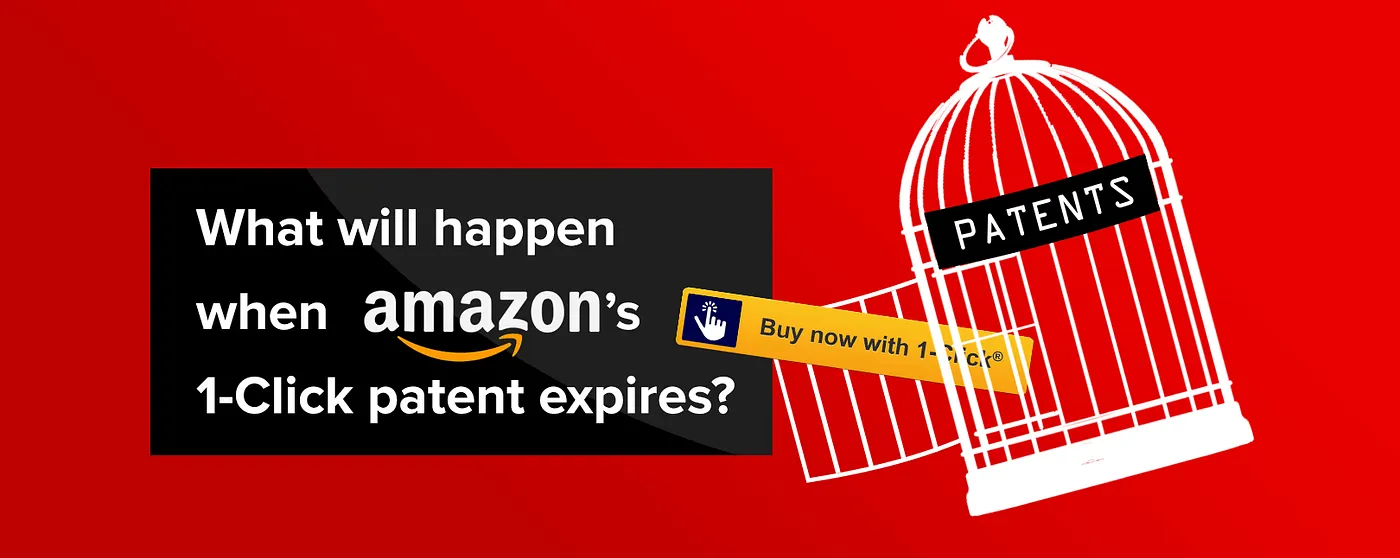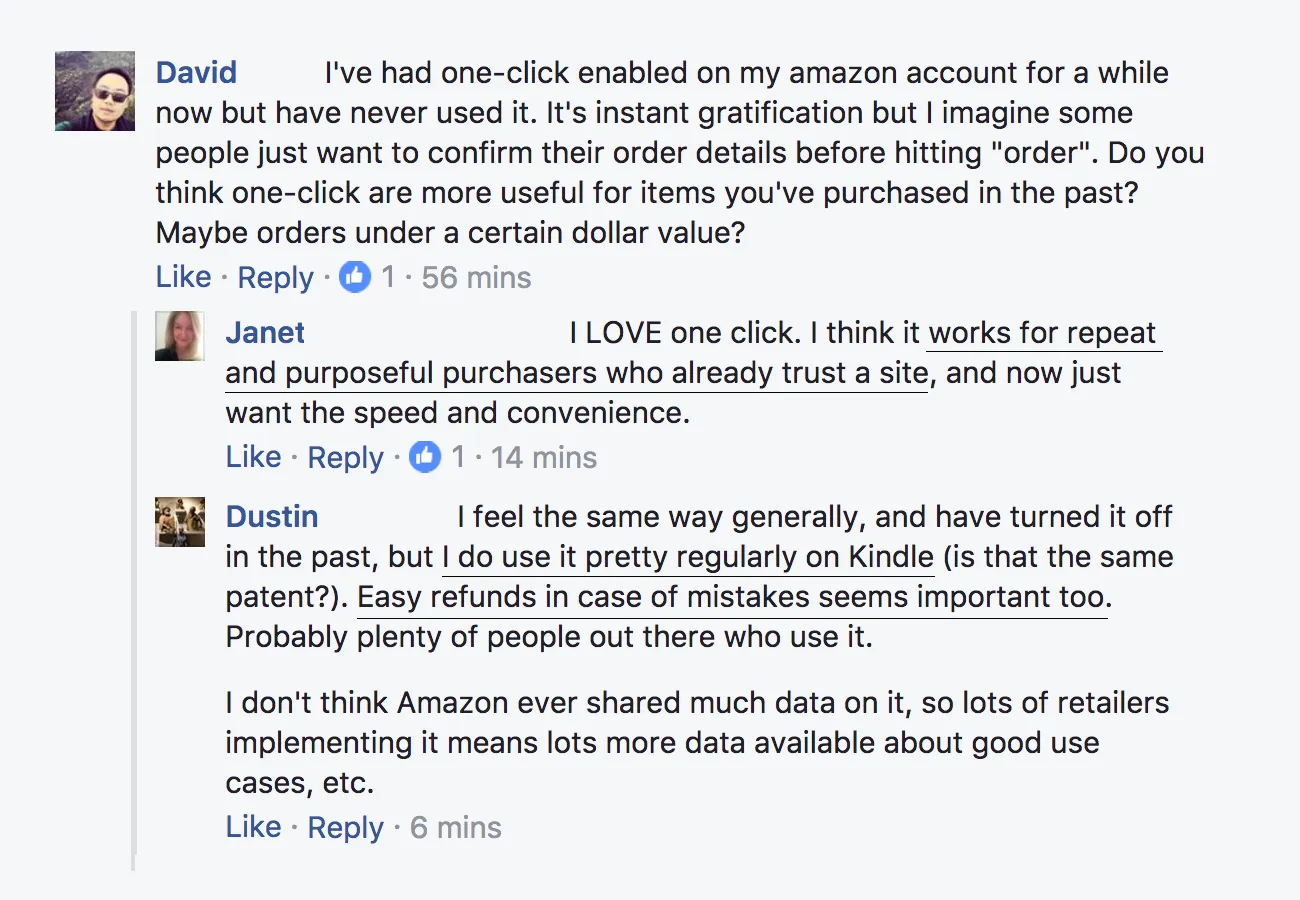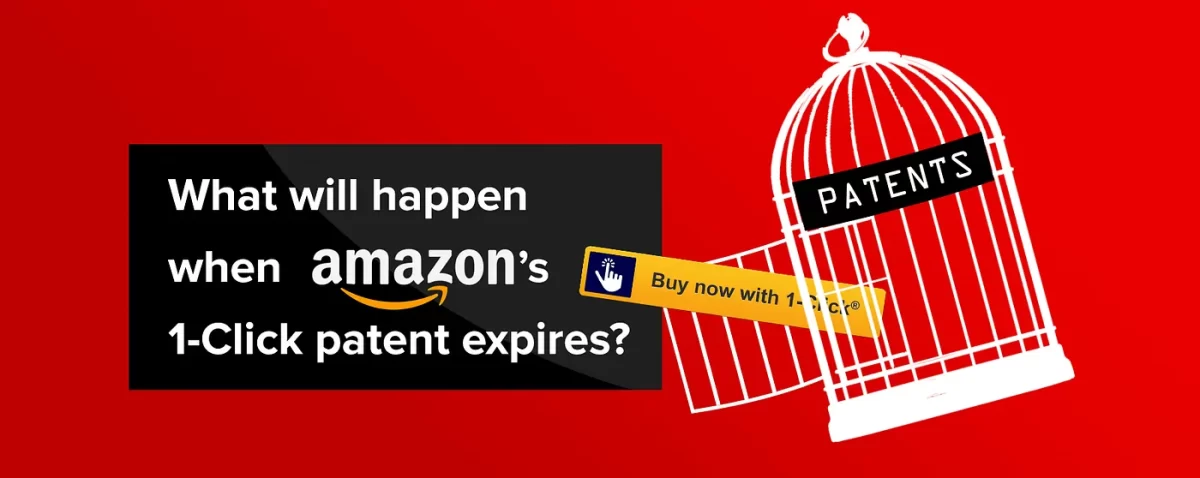Last Updated on August 31, 2023 by David
How to leverage 1-click to boost customer happiness and loyalty.

By now you will have heard that on September 20th, 2017, Amazon’s patent for 1-Click will expire. If you’re not familiar with 1-Click, here’s a description of the feature from Amazon:
When you place your first order and enter a payment method and shipping address, 1-Click ordering is automatically enabled. When you click Buy now with 1-Click on any product page, your order will be automatically charged to the payment method and shipped to the address associated with your 1-Click settings.
eCommerce platforms and businesses should rejoice because 1-Click is a significant feature that’s capable of driving enormous lifts in terms of engagement and conversion. And before Amazon releases data for how 1-Click might’ve helped them become the #1 eCommerce company in the United States over the past two decades we can make some speculations as to how 1-Click can benefit the average storeowner.
The good news is that 1-Click will be available for you to use soon. For example, Shopify currently supports Shopify Pay, a free service for their users to speed up the checkout process. Shopify claims that this feature alone has shown to “checkout completion times that are up to 40% faster, and a conversion rate that’s up to 18% higher for returning customers”. If this is any indication of what’s to come for a 1-Click equivalent, it will be a game changer. The question is, how can you prepare yourself in a “1-Click eCommerce environment”?
1-Click will benefit stores that have focused on great customer service. Period. The community consensus is that 1-Click has drawbacks but also remarkable advantages. Looking at the exchange below, adopting 1-Click will require a business owner, you, to plan ahead:
- What types of products are suitable for 1-Click?
- What price points should you target to make to take advantage of 1-Click for maximum effect?
- How will you leverage 1-Click to attract your repeat buyers?
- How should you generate trust? Is 1-Click a source of trust-generation or is it a byproduct of trust? Think about this.
- How will you shape your customer service to address pre-sales and post-sales support?
- How do you plan on altering your return or shipping policies so that they align to purchasing patterns as a result of 1-Click?

Facebook interaction from Shopify Entrepreneurs Group
There’s no debate that 1-click is used most often by repeat shoppers (they already have to have a credit card or payment method on file). Repeat shoppers are mostly those that have had a good buying experience, and one major factor in a good buying experience is building trust through interactions. Interactions can come from a variety of sources:
- Will you be offering on-site chat in conjunction with 1-Click so shoppers can get answers as fast as they can checkout?
- Will you offer social media support that’s as quick as the instant gratification generated by 1-Click?
- How will your email support change in case you receive requests for cancellations, refunds, or general inquiries? As 1-Click shoppers are mostly repeat buyers, how will you treat them differently?
- Will proactive engagement work with 1-Click? For example, if there’s a flash sale running today, would it be optimal to offer 1-Click as the sole checkout method?
There are also some disadvantages to 1-Click for eCommerce businesses. It’s likely that this 20-year old craving for 1-Click will lead to a rapid adoption rate for this otherwise untested technology in the wild. Widespread uptake for 1-Click can draw in issues like fraud, confusion between payment platforms, and UI issues on the customer end. Here are some things to keep in mind before you jump onto the 1-Click bandwagon. Improper assimilation of 1-Click into your shopping experience may do more harm than good.
- Strains on your inventory, fulfillment, and case management processes due to unauthorized purchases or charges due to 1-Click
- Shoppers getting confused and overachieving their purchase habits due to the over-simplicity of 1-Click
- Expired information such as credit card numbers and shipping addresses can cause unnecessary confusion
- Chargebacks and fraud due to a lack of confirmations and verifications
Thus, to prepare for the coming wave of 1-click shopping experiences, stores should be focusing on streamlining their products, price points, store UI, policies, customer service protocols, fraud prevention and chargeback measures, and customer interaction touchpoints and strategies ASAP.
We will continue to update you on 1-Click as we obtain more data.

